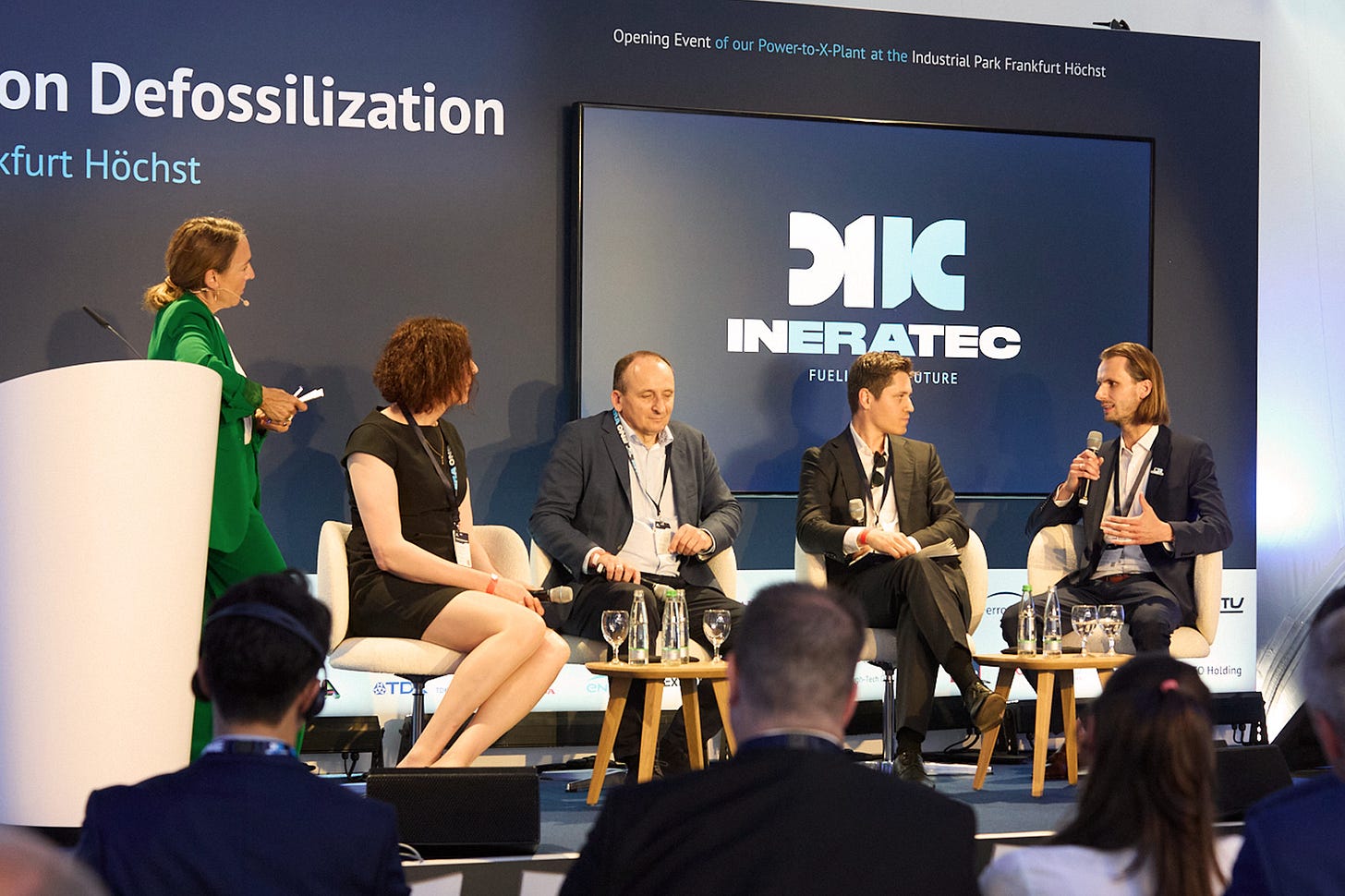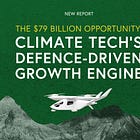Europe’s energy Achilles’ heel — and why an e-fuel plant matters more than its size suggests
A new synthetic fuel facility in Frankfurt highlights the growing overlap between climate tech and defence.
The recent inauguration of INERATEC's Frankfurt plant, Europe's largest e-fuel production facility, might seem like another milestone in sustainable aviation.
But according to defence analysts on a panel coinciding with the plant opening, this pioneering facility represents something far more significant than its 2,500-tonne annual capacity suggests: a potential solution to Europe's fuel dependency crisis.
"We have the chance here to kill several birds with one stone," explained Maximilian Backhaus, CCO of INERATEC, during the panel discussion. "We must improve resilience, prepare for crisis scenarios, and secure fuel supply even in crisis situations. As a pragmatist, I see the opportunity to use the resources set aside to improve resilience and defence capabilities. This would allow us to advance future security and climate neutrality simultaneously."
This convergence isn't just theoretical. INERATEC has already partnered with Rheinmetall to develop Giga-PTX, a decentralised synthetic fuel production network designed specifically for military applications. At Eurosatory 2024, Rheinmetall demonstrated its Caracal light airborne vehicle running entirely on INERATEC-produced synthetic fuel, proving the technology's battlefield readiness.

Europe's fuel dependency nobody talks about
The strategic vulnerability that makes climate technology suddenly critical was starkly outlined by Shena Britzen from Rheinmetall: "We will have no fuel in Europe in wartime. The distribution logistics we have in Europe are designed for us to inject fuel at ports in the North Sea and Mediterranean, then distribute it via individual pipelines.”
As a result, Europe's fuel distribution system depends entirely on maritime imports delivered to North Sea and Mediterranean ports, a supply chain that assumes uninterrupted access and cooperative international logistics in crisis scenarios. NATO studies project wartime fuel demand of 20.5 million tonnes annually for major European conflict scenarios.
"If I were a Russian attack planner, I would target our fuel system first," Britzen explained. "Then we can spare ourselves everything else. Everything we see — AI, F-35s, drones — all of that needs energy. And all of that stays cold and dark if there's no fuel in it. Military readiness begins with fuel availability."
This operational reality drives a fundamental shift in how defence planners view climate technologies. What started as environmental compliance is becoming a survival strategy.
From climate goals to strategic necessity
The implications extend beyond military applications. Christian Küchen from en2X emphasised the broader resilience challenge: "We must first make it clear that we need the products we're talking about, regardless of whether we're discussing a new way of using hydrocarbons for a resilient energy system. Not just for aviation and shipping, but also in many civilian uses."
For Ruben Davis from Cleantech for Europe, this represents a critical opportunity: "Resilience is not just supply security, it's also industrial sovereignty and technological leadership. It's very important that we have e-fuels; we're currently in leadership mode. If we can build these industries, we can help the chemical industry too, and we can export our technologies globally."
The scale of transformation required demands new thinking about investment and procurement. As Britzen noted: "It's a change in mindset. Nobody asks what an F-35 costs because it's defence. The ability to produce fuel should follow the same narrative as having an F-35."
The new innovation imperative
This reframing shifts climate technology priorities from cost optimisation to strategic value. Rather than focusing solely on carbon intensity, the emphasis moves to resilience, independence, and security applications.
INERATEC's partnership with Rheinmetall exemplifies this shift. The collaboration combines INERATEC's modular Power-to-Liquid technology with Rheinmetall's defence expertise to create deployable fuel production units that can be rapidly positioned across Europe.
Each operational plant in the Giga PtX network can produce 5,000-7,000 tonnes of military-grade synthetic fuels annually, with modular design allowing rapid scaling based on operational requirements.
But INERATEC isn't alone in recognising this convergence. Across Europe, defence contractors are forming similar partnerships with climate tech companies. The European Defence Fund has allocated over €1 billion annually to collaborative defence R&D projects, many focusing on energy resilience.
The opportunity window
According to a recent SimpliFlying analysis, this defence-climate convergence represents a $79 billion market opportunity by 2029. However, success requires honest communication about costs.
As Küchen warned, "Politicians must tell citizens that it will be more expensive. To suggest we can make all these transformations without it costing more doesn't work either. We all have to pay for it."
As Europe grapples with its most serious security challenges since World War II, technologies like INERATEC's synthetic fuel production are transitioning from environmental initiatives to strategic necessities. The companies that recognise and respond to this shift will not just participate in the energy transition, they'll help secure it.



